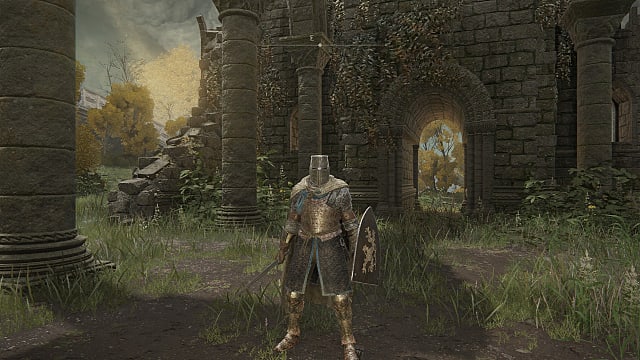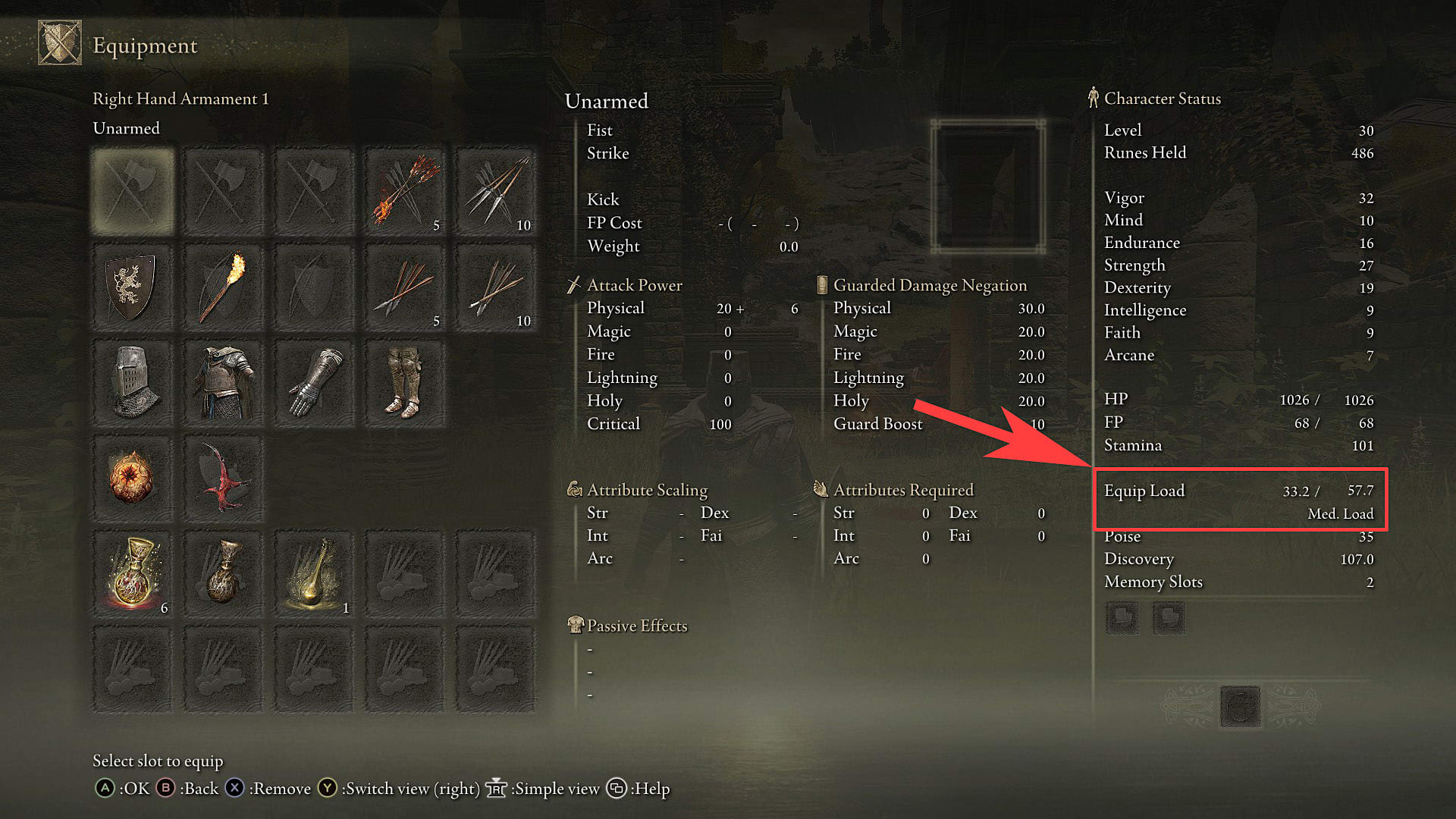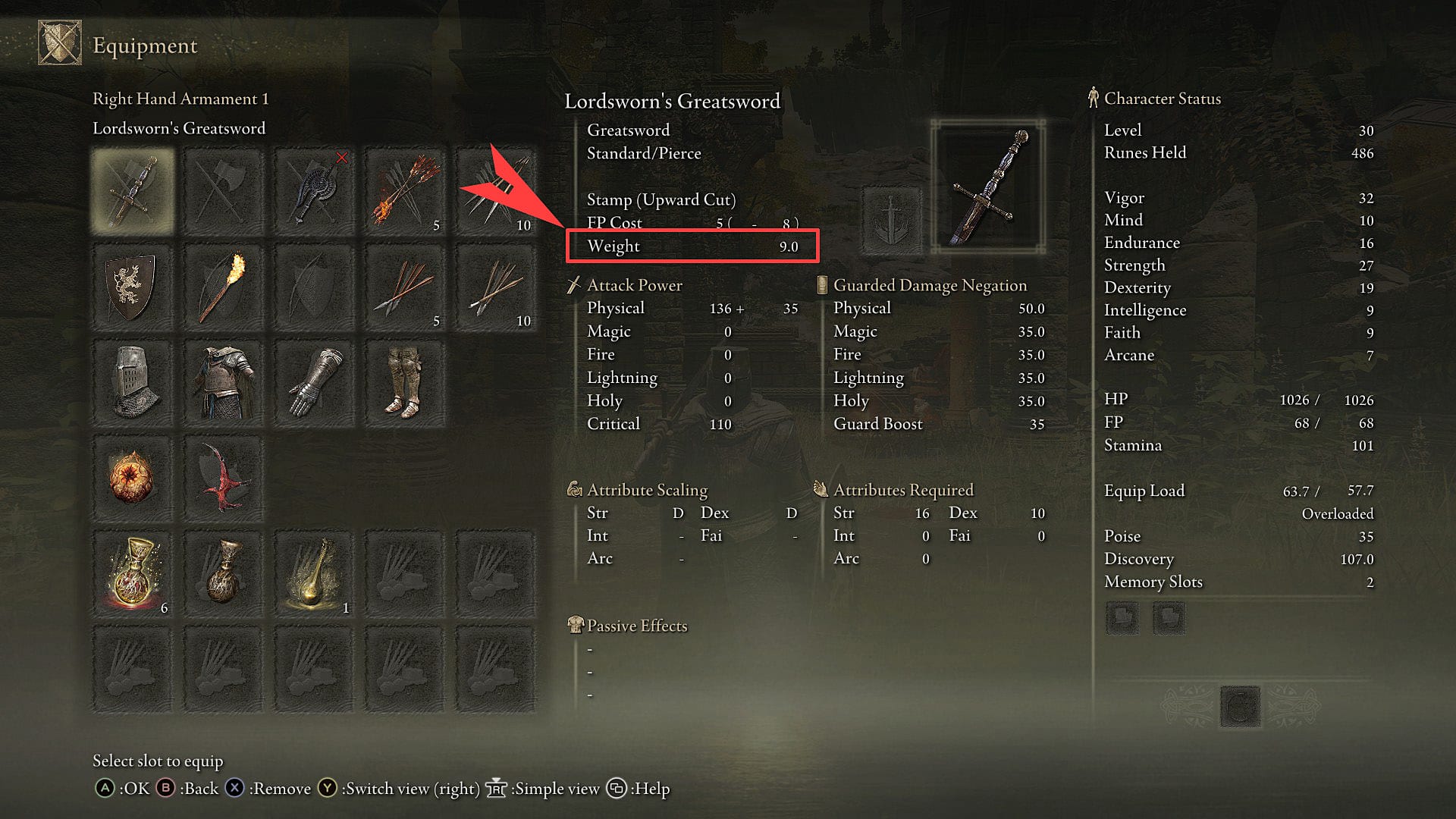Equip load is one of the easier-to-understand concepts in Elden Ring. Governed by the Endurance stat, it is, at its simplest, what determines the kind of dodge roll your character can do. There’s a bit more to it than that, and optimizing your equip load can be key to success or failure in your journey through the Lands Between.
In this Elden Ring guide, we’ll tell you everything there is to know about equip load so that you can still dodge roll and evade enemies while wearing armor that’s both helpful and fashionable.
How Equip Load Works in Elden Ring
Equip load determines which of the four roll types you’ll use in Elden Ring. It uses the same ruleset as Dark Souls 3.
- Below 30% total load, you can “fast roll,” where your dodge covers the longest distance and has the most invincibility frames.
- From 30-69% total load, you will “mid-roll,” with fewer invincibility frames and a significantly reduced roll distance.
- Between 70-99% load, you will “fat roll,” with your character flopping hard on the ground with every dodge. The move has the same invincibility values as a mid-roll, or close to it, but it takes significantly longer to recover, you won’t travel nearly as far, and the whole screen will shake with the weight of your character falling.
- At 100% load and above, your character won’t be able to roll or run at all. If you press the dodge button, your character will stagger forward for a moment, then return to standing or walking. The walk itself is very slow and heavy, leaving you vulnerable and without any way to avoid much of anything.
Every equipable item in the game has a weight value found near the top of their core statistics screen. This includes weapons, armor, and talismans. Note: that includes anything equipped to a slot, even if you aren’t using it in-game. If you’re exclusively using an Uchigatana in your Armament 1 slot, for example, but also have a hammer you never use equipped to your Armament 2 slot, that hammer still counts to your equip load.
Near the bottom of your character’s statistics — Vigor, Mind, Endurance, etc. — is your Equip Load value. Note that there are two numbers at play: the one on the left is the total sum of everything you’re currently wearing, and the one on the right is your maximum governed by your Endurance stat.
Below the numbers is a note telling you your total load:
- Light
- Medium
- Heavy
- Overloaded
Optimizing your armor and equipment to get the value you want takes a little bit of math and a lot of time thinking about what you want to equip. Again, weapons, armor, and talismans all add to your total equip load, and while the stat screen lists values down to tenths, there’s a sticking point you should be aware of.
Armor effectively has weight values in the hundredths as well, so sometimes you’ll be right on 30% or 70% equip load, but still be able to fast or mid-roll. Equipping another armor piece with the same weight might show the same total load, but you’ll have the worse roll. There’s no accounting for this distinction.
That’s about all you need to know about equip load beyond the math and customization required to make yourself as fancy or edgy as you like. Armor is about more than good looks, though. Our poise guide discusses why. You might also want to change how your build works for new clothes or equipment. Check our guide on how to respec for more on that. Be sure to keep our Elden Ring guides hub open, too, as there’s always more happening there.









Published: Mar 6, 2022 09:08 pm